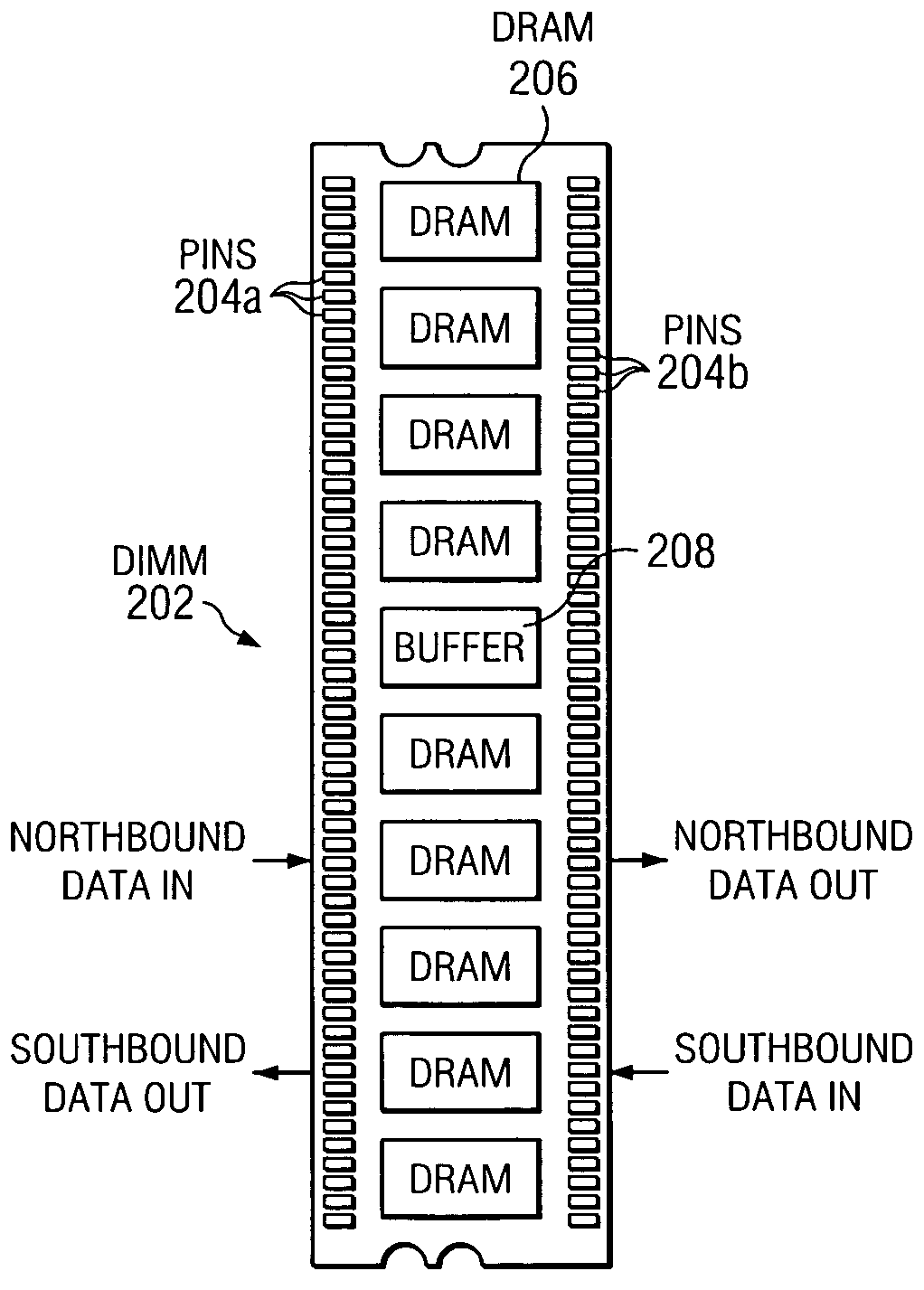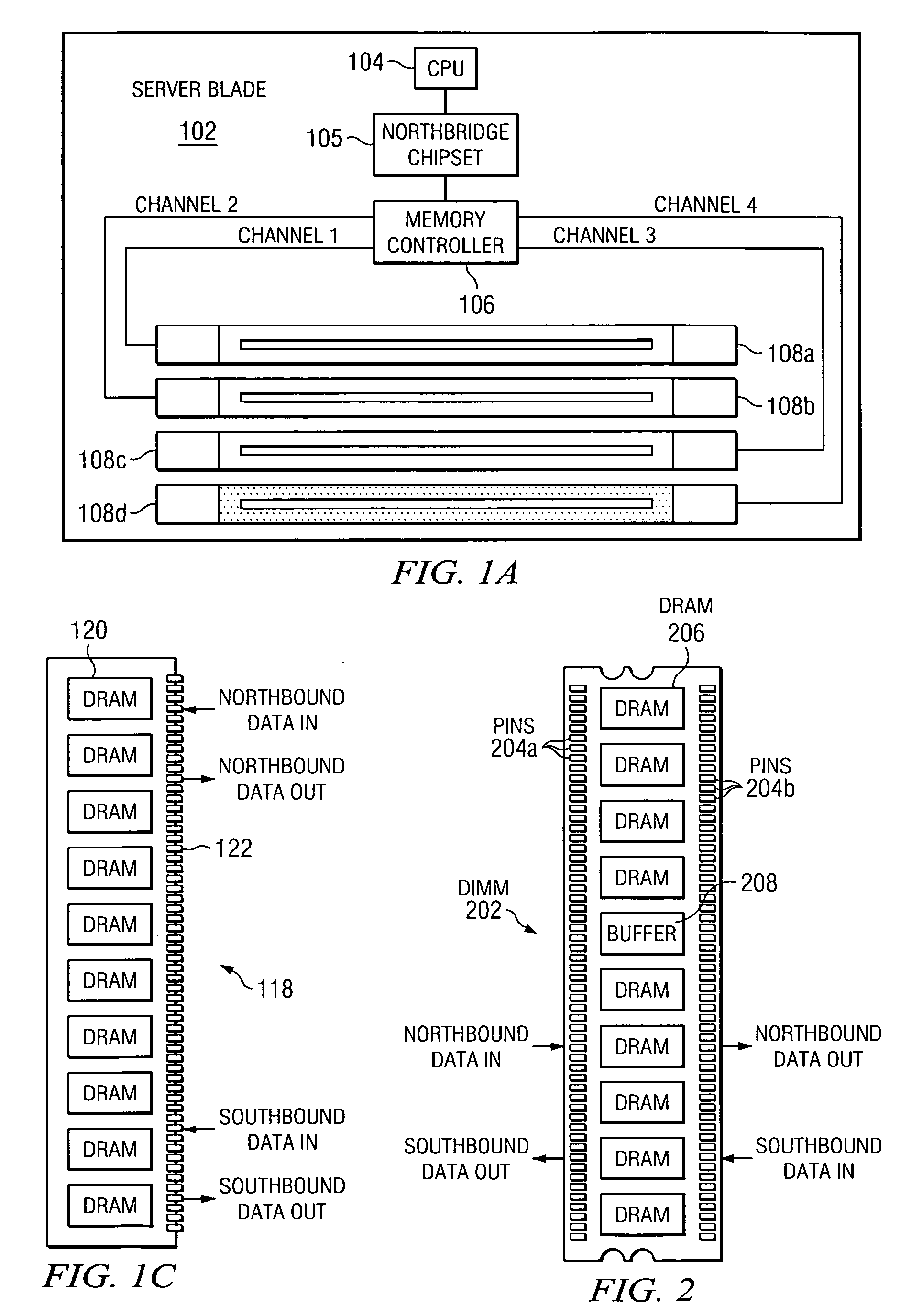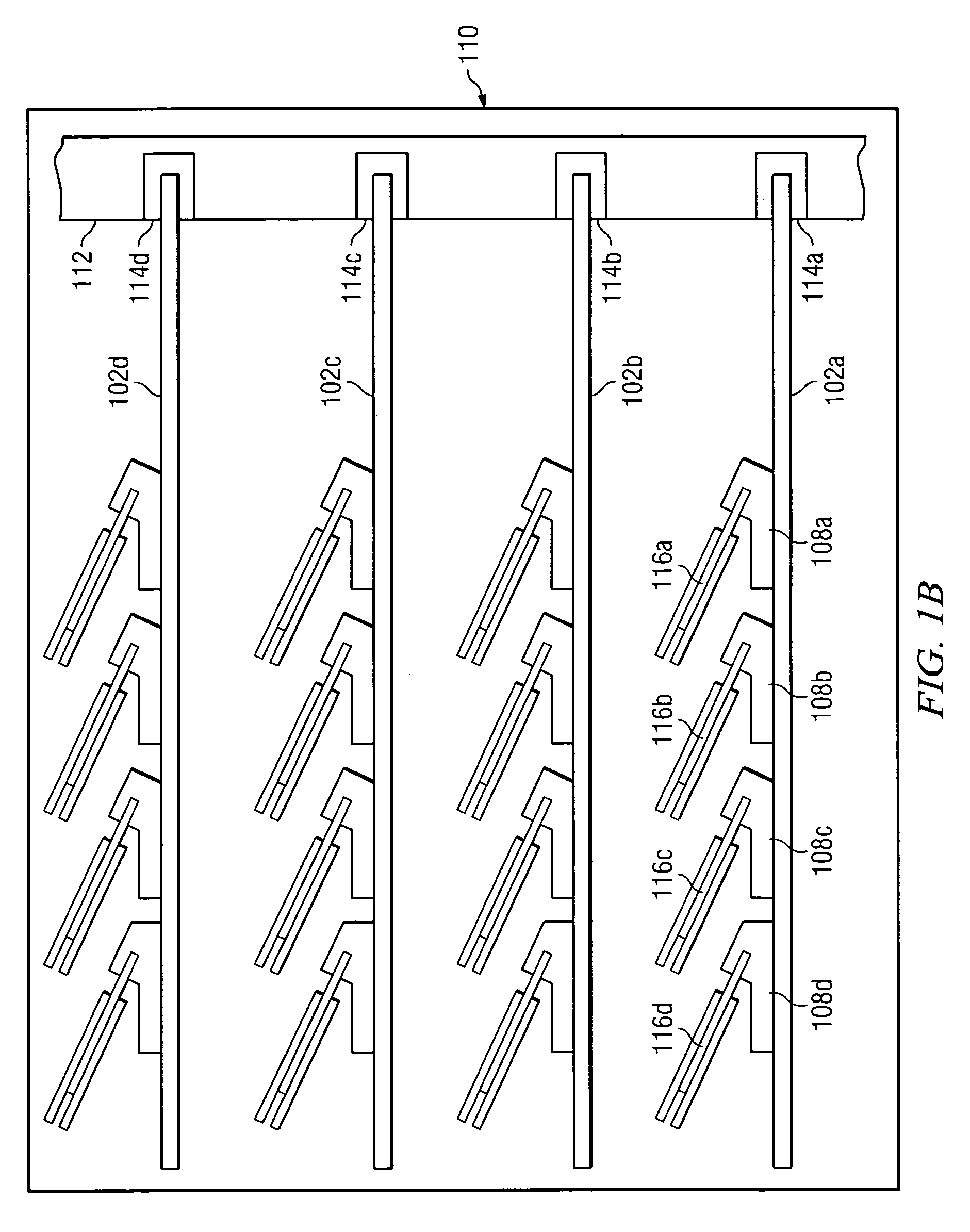Dual-edged DIMM to support memory expansion
a memory expansion and dual-edged dimm technology, applied in the computer field, can solve the problems of a limited number of memory sockets, a small density server, and a large number of users demanding much more memory capacity
- Summary
- Abstract
- Description
- Claims
- Application Information
AI Technical Summary
Benefits of technology
Problems solved by technology
Method used
Image
Examples
Embodiment Construction
[0022]With reference now to the FIG. 2, there is depicted an inventive double-connector-edge Dual In-line Memory Module (DIMM) 202. On opposite edges of double-connector-edge DIMM 202 are pins 204a and 204b. Preferably, pins 204a and 204b each number 240 pins, in order to conform to the standard number of pins in a Low Profile (LP) DIMM (having a height of 1.2″) and a Very Low Profile (VLP) DIMM (having a height of 0.72″). Pins 204 provide electrical inputs for data and related signals as well as power and ground connections. As shown, double-connector-edge DIMM 202 has multiple Dynamic Random Access Memories (DRAMs) 206 for storing data.
[0023]In addition, double-connector-edge DIMM 202 has a buffer 208. Buffer 208, as the name implies, is a buffer for all data (including but not limited to data to be stored; data addresses; control signals such as Row Address Strobe (RAS) and Column Address Strobe (CAS), write enable, read enable, chip select, clock input, Error Correction Code—ECC...
PUM
 Login to View More
Login to View More Abstract
Description
Claims
Application Information
 Login to View More
Login to View More - R&D
- Intellectual Property
- Life Sciences
- Materials
- Tech Scout
- Unparalleled Data Quality
- Higher Quality Content
- 60% Fewer Hallucinations
Browse by: Latest US Patents, China's latest patents, Technical Efficacy Thesaurus, Application Domain, Technology Topic, Popular Technical Reports.
© 2025 PatSnap. All rights reserved.Legal|Privacy policy|Modern Slavery Act Transparency Statement|Sitemap|About US| Contact US: help@patsnap.com



